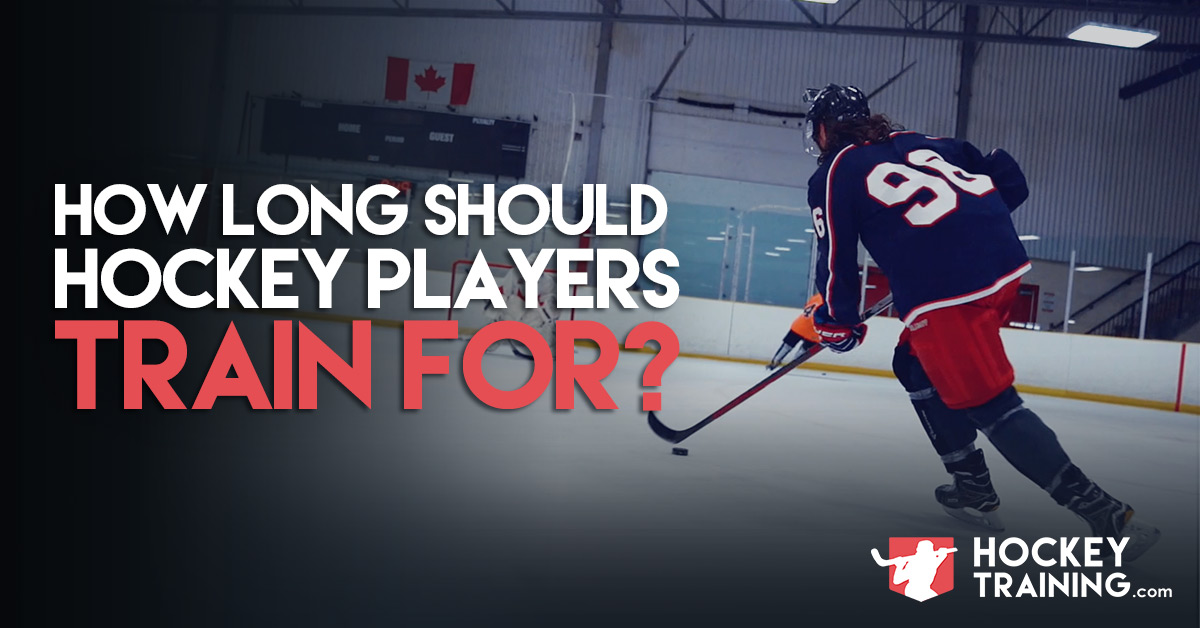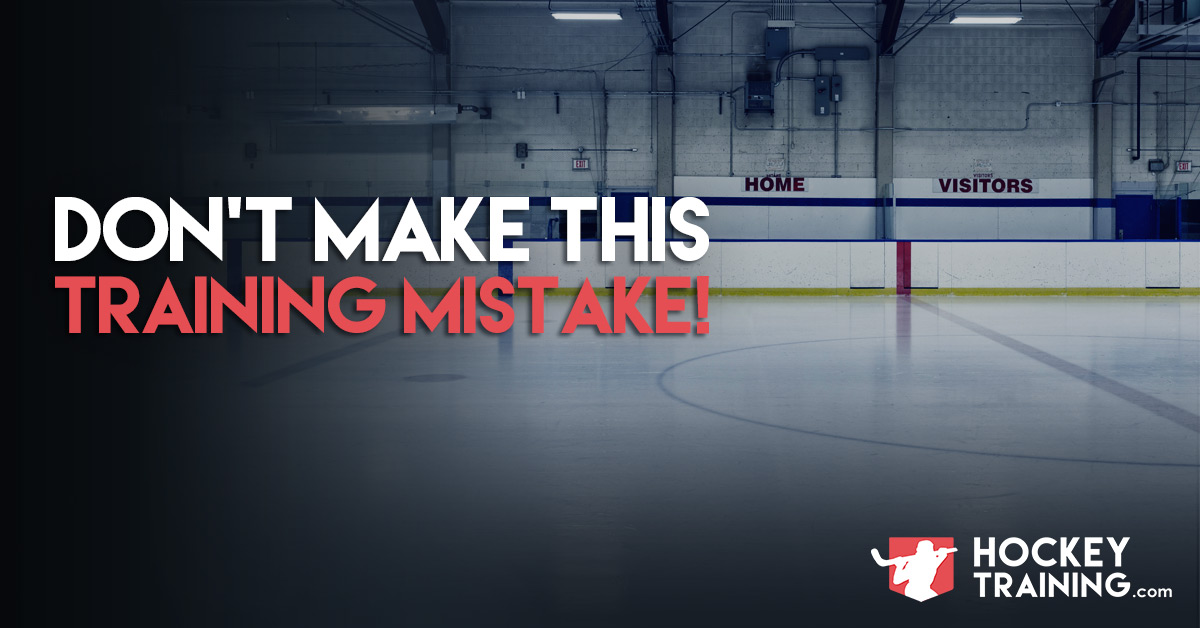“If you’re training for longer than 45mins, you’re making friends and not gains”
“If you train longer than one hour, your cortisol goes up and your testosterone goes down and you’ll lose muscle”
“You only need one hard set per muscle group, the rest is just junk volume”
If you have been into training for a few years, you have probably heard all of these common “gym-rules”.
Although some of the reasoning might differ as to why you shouldn’t be training for hours on end, there different is optimal times in which hockey players should probably pack it in and call it a day.
Let’s take a look at some of those reasons and discuss some of the important research implications they present as well.
First and foremost, we need to tackle why someone would even train for hours on end in the first place.
I think some people like to extend their training sessions for the simple reason that they can reduce their total gym sessions per week.
Longer workouts mean you only need to go to the gym three times per week instead of five times, right? Traffic sucks!
In a similar vein, I think people extend their workout length in an attempt to free up other time in their schedule to attend different social activities.
“If I do two workouts in one on Monday, after work I can hang out with my friends and watch Game of Thrones!”
Three big workouts instead of five workouts also means you can take the weekend off, and you know, screw everything up by partying (which you ironically made time for by cutting your training frequency).
Lastly, you might just be the kind of person who takes forever to warm up. Whether it be because you have a ton of injuries, or because you have been swept up and taken away from the mobility craze and need to bring your foam roller, lacrosse ball, band, and hip circle just to tie your shoes.
In this case, you simply just burn a ton of time with your mobility work and thus extend your training session.
But…
Do these types of actions come with a trade-off?
Yes, yes they do.
The above reasons for extending training session length are largely born out of convenience and wanting to do other, non-performance productive things.
This doesn’t make you a bad person at all, but it also doesn’t change the science behind workout length either.
Why Long Training Sessions Can Negatively Affect Hockey Performance
First off, the longer a training session is the more tired you gradually become by the end of it. These long sessions can cause somebody to begin to fatigue even when there is still plenty of work left to be done.
This is a problem because any of the work that you’re going to perform in a fatigued state is negatively impacted for five main reasons:
#1: Due to a lower force output (compared to when you’re fresher), the overall impact you’re going to be able to create on a muscle cell for growth is going to be dramatically limited.
For example, if you planned to hit legs and back, but you absolutely destroyed your legs first—you are likely not going to be training with the weights you would have otherwise used with your back work had you done back first in the session.
This leads to a lower stimulus for growth in your back muscles and a dramatically reduced productivity rating on your time spent in the back half of your session.
#2: For the same reasons, if you are performing strength or power work, you may literally be too fatigued to lift the weights you need to in order to create a strength-building stimulus to make progress from.
Lifting the exact same weights and reps as last week? Don’t expect to get stronger.
Especially if you’re advanced.
This becomes very true for power since research has demonstrated that unless you are moving at your 90% max velocity, you are no longer training for power enhancement. I probably don’t need to say this, but it’s highly unlikely you are moving at 90%+ of your max velocity during a long workout.
#3: Both common sense and legitimate research tell us that if we are training in a fatigued state for an extended period of time, our technique is going to suffer.
When our technique suffers, we are at much greater risk for getting injured and we are also not executing the movements properly to target the muscles we are training to their maximum capability. This means less results and more injuries.
#4: Some of you may be thinking “Well I train for a long time but I don’t get tired or lose technique, I’m fine!” – although I believe you, this is still a sub-optimal scenario due to conflicting adaptations within the muscle cell itself. Your training needs to be very exact and send only a certain message to the muscle per training session (I.e. Power, strength, muscle growth, or endurance. Pick one, and train it).
We pick an exact stimulus to send to the muscle, and then we stop training so our muscle can adapt to that specific stimulus we wanted to train for. This is means, do your work and get out.
Plenty of research demonstrates that if we keep training for 90-120+ minutes that we can “muddy the water” of this stimulus we are trying to create, in that, you may have created an excellent strength stimulus by squatting in the beginning of your workout, but since you trained for so long your body needs to adapt more to endurance work as opposed to strength work.
So you lose the strength potential of the stimulus you could have sent in that particular workout.
#5: If you aren’t carefully plotting out your pre, intra, and post-workout nutrition, you are making a big mistake by training too long. If you train hard for hours on end, you will inevitably increase catabolic hormones (muscle wasting) and reduce anabolic hormones (muscle building).
You aren’t at the gym to lose muscle and strength, so structuring your workouts this way is pretty silly. Pre and Intra workout nutrition can nullify this problem very effectively, but their efficacy isn’t the “be all end all”, so it is still recommended to shorten the length of the training session to some extent.
In any case, I always have my athletes consume a carbohydrate powder, protein, and electrolytes both intra and post-workout for these reasons (and many others). Which you can learn more about here and in our gameday hockey nutrition guide.
Recap
At the end of the day, you can see that although it might work better for your schedule to have really long workouts, the science would suggest that you shorten them up a bit if you want the best results possible.
Long story short, anything under an hour is fine, anything up to 2hrs definitely requires an intra-workout shake, and 2+hrs is likely too long for maximal adaptations. In all cases, I still highly recommend the intra and post-workout shake.
If you want to learn more about how to properly train as a hockey player check out any of our hockey training programs!










Great tips